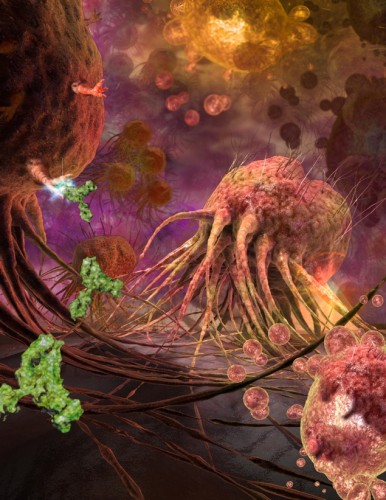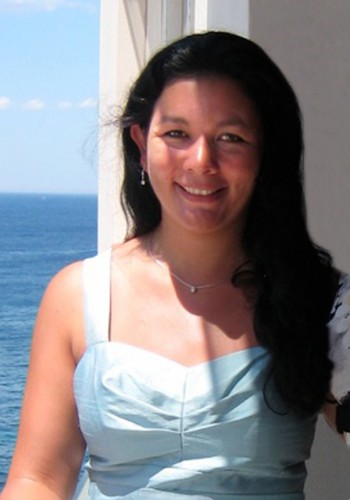
As a freshman at Yale, Emiko-Rose Paul was a typical pre-medical student. Pre-med in the 1980s didn’t look so different from pre-med now; like many others, Paul was a biology major, trudging through the introductory prerequisite courses. But every semester, there was one class on her schedule that she always looked forward to — art.
Whether it was design, figure drawing, or lithography, Paul knew by the time she graduated in 1991 that she loved art too much to leave it behind. But she was also excited by science, especially animal behavior and ecology. Rather than choosing either path, she created her own at the intersection of science and art. Since jumping into the field of medical illustrations, Paul has never looked back. She and her husband now run Echo Medical Media, a medical illustrations company named after their dog, Echo.
Paul’s career decision was influenced by people she met at Yale. The first was her faculty adviser for biology, Charles Remington, who specialized in entomology and evolution. “Senior year, with his help, I did my thesis on the nymphal stages of the American cockroach and accompanied it with watercolor plates that showed changing patterns of the different stages,” Paul said. “It was the first real idea I had that I could do something with art.”
Paul realized it was important to find something that catered to her specific interests. As an undergraduate, she found her options were often limited: Yale’s science curriculum was focused more on molecular biology than her primary interest, organismal biology, and Yale’s art program emphasized abstract painting over what she truly enjoyed, life drawing. But in spite of these department restrictions, Paul wanted to find a way to explore her true passions. She met a man at the Yale Peabody Museum who was working on facial reconstructions of early hominid skulls, and found out he had gone to a graduate program for medical illustrations. Paul was immediately intrigued. “It was the first time I had heard of something like that,” she said.

Hoping to pursue a similar path, Paul spent her first two years after graduation in Paris working on her art portfolio, and then applied to graduate programs in medical illustrations. In 1994, she enrolled in a program at Johns Hopkins. Her curriculum overlapped considerably with that of medical school students; she spent her first year in human anatomy and physiology classes doing dissections, and most of her second year observing surgeries. “Most people don’t realize that every medical illustrator had to go through some medical training, and there’s a certain community of people who have gone through all the hoops who produce the best work,” Paul said.
After finishing her graduate program, Paul worked as a medical illustrator for publishing companies until she started Echo Medical Media in 2000. The field has grown substantially in the past two decades, which she views as one of the most exciting aspects of her work. “Fortunately, I picked a field that really evolves with you,” she said. The field has expanded to include 3D modeling, and medical illustrations are now recognized for their broad range of applications.
Paul’s goal for medical illustrations has always been to be a great communicator. “We want to explain the beauty of science, to explain things that can’t be seen by the human eye or things that can’t be photographed,” she said, adding that she thinks her background in biology and medicine has been essential to her success.
She also sees real value in medical illustrations because she likes using art to teach people unfamiliar concepts. “My main focus was always education,” she said. “For me, it’s not just a pretty piece of art that keeps text interesting; it’s about the big picture and how all media can be used together to communicate something.”
Paul has no regrets about her decision to pursue medical illustrations instead of sticking to the pre-med path and becoming a surgeon. “I’m sure a part of me would have been fine [as a doctor], but my general temperament is more on the artistic side than the hard science side,” she said. Luckily, she found something she genuinely loves to do. Paul works from a home studio, using the Internet to correspond with clients all over the world. “One of the real pleasures is continually learning new techniques, meeting great scientists and working with great authors,” she said.
But a true sign of her success is how immersed she is in her day-to-day work. Paul enjoys every project she works on, whether it’s illustrating for a textbook or designing a magazine cover. She proudly called herself a workaholic. “I’ve been doing this for 20 years,” she said, “and I still love it as much today as I did when I started.”
